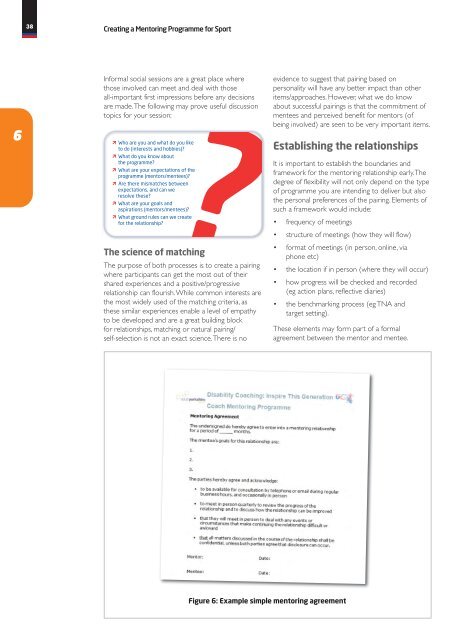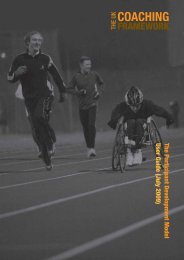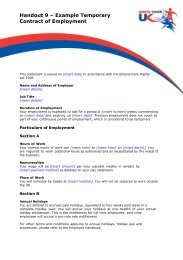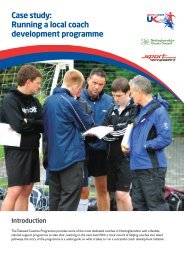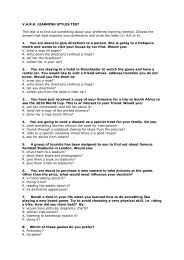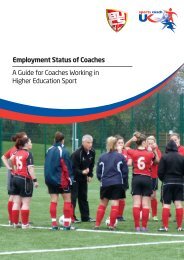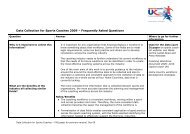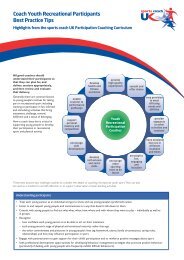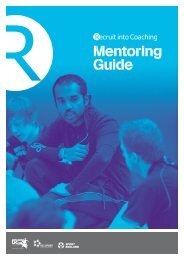Creating a Mentoring Programme for Sport: A ... - sports coach UK
Creating a Mentoring Programme for Sport: A ... - sports coach UK
Creating a Mentoring Programme for Sport: A ... - sports coach UK
Create successful ePaper yourself
Turn your PDF publications into a flip-book with our unique Google optimized e-Paper software.
38<strong>Creating</strong> a <strong>Mentoring</strong> <strong>Programme</strong> <strong>for</strong> <strong>Sport</strong>6In<strong>for</strong>mal social sessions are a great place wherethose involved can meet and deal with thoseall-important first impressions be<strong>for</strong>e any decisionsare made. The following may prove useful discussiontopics <strong>for</strong> your session: Who are you and what do you liketo do (interests and hobbies)? What do you know aboutthe programme? What are your expectations of theprogramme (mentors/mentees)? Are there mismatches betweenexpectations, and can weresolve these? What are your goals andaspirations (mentors/mentees)? What ground rules can we create<strong>for</strong> the relationship??The science of matchingThe purpose of both processes is to create a pairingwhere participants can get the most out of theirshared experiences and a positive/progressiverelationship can flourish. While common interests arethe most widely used of the matching criteria, asthese similar experiences enable a level of empathyto be developed and are a great building block<strong>for</strong> relationships, matching or natural pairing/self-selection is not an exact science. There is noevidence to suggest that pairing based onpersonality will have any better impact than otheritems/approaches. However, what we do knowabout successful pairings is that the commitment ofmentees and perceived benefit <strong>for</strong> mentors (ofbeing involved) are seen to be very important items.Establishing the relationshipsIt is important to establish the boundaries andframework <strong>for</strong> the mentoring relationship early. Thedegree of flexibility will not only depend on the typeof programme you are intending to deliver but alsothe personal preferences of the pairing. Elements ofsuch a framework would include:• frequency of meetings• structure of meetings (how they will flow)• <strong>for</strong>mat of meetings (in person, online, viaphone etc)• the location if in person (where they will occur)• how progress will be checked and recorded(eg action plans, reflective diaries)• the benchmarking process (eg TNA andtarget setting).These elements may <strong>for</strong>m part of a <strong>for</strong>malagreement between the mentor and mentee.!Figure 6: Example simple mentoring agreement


